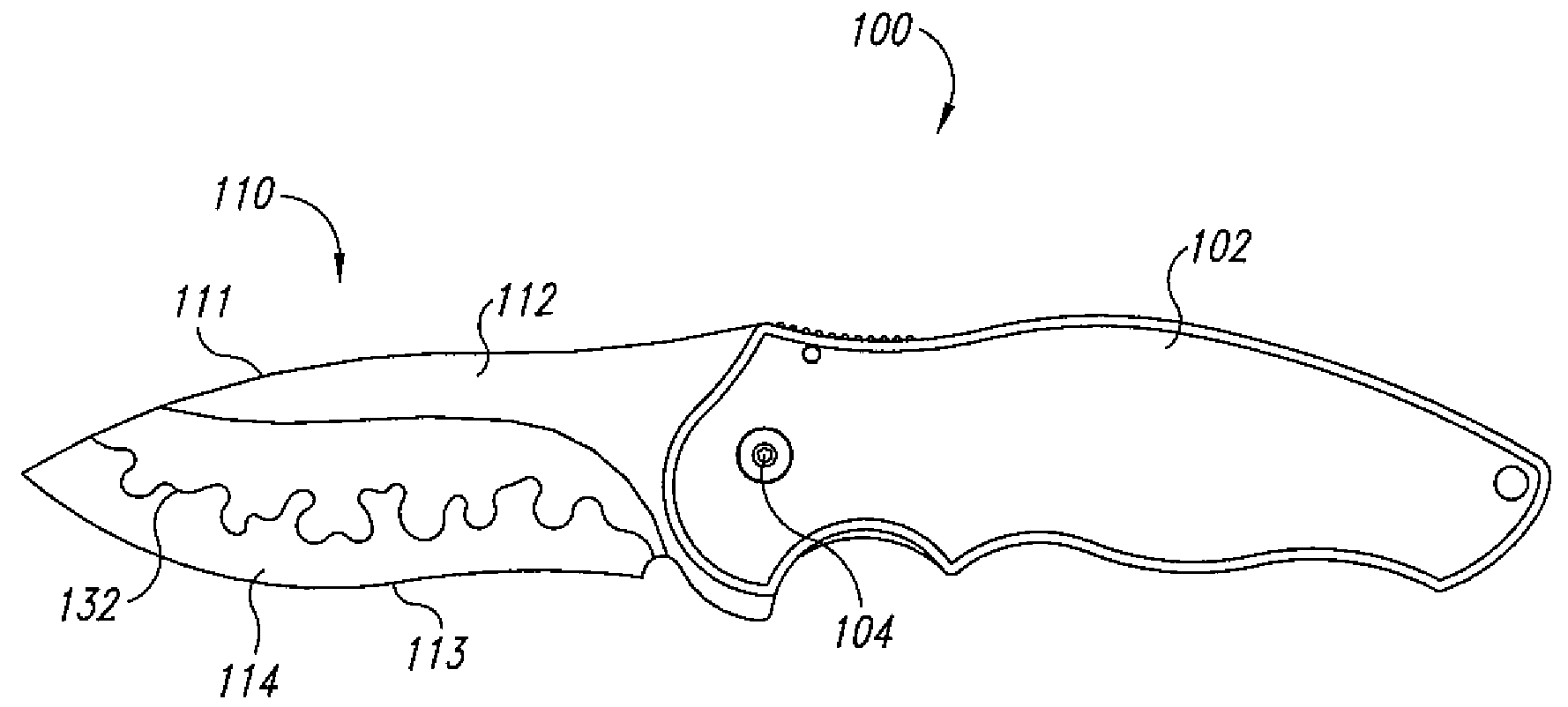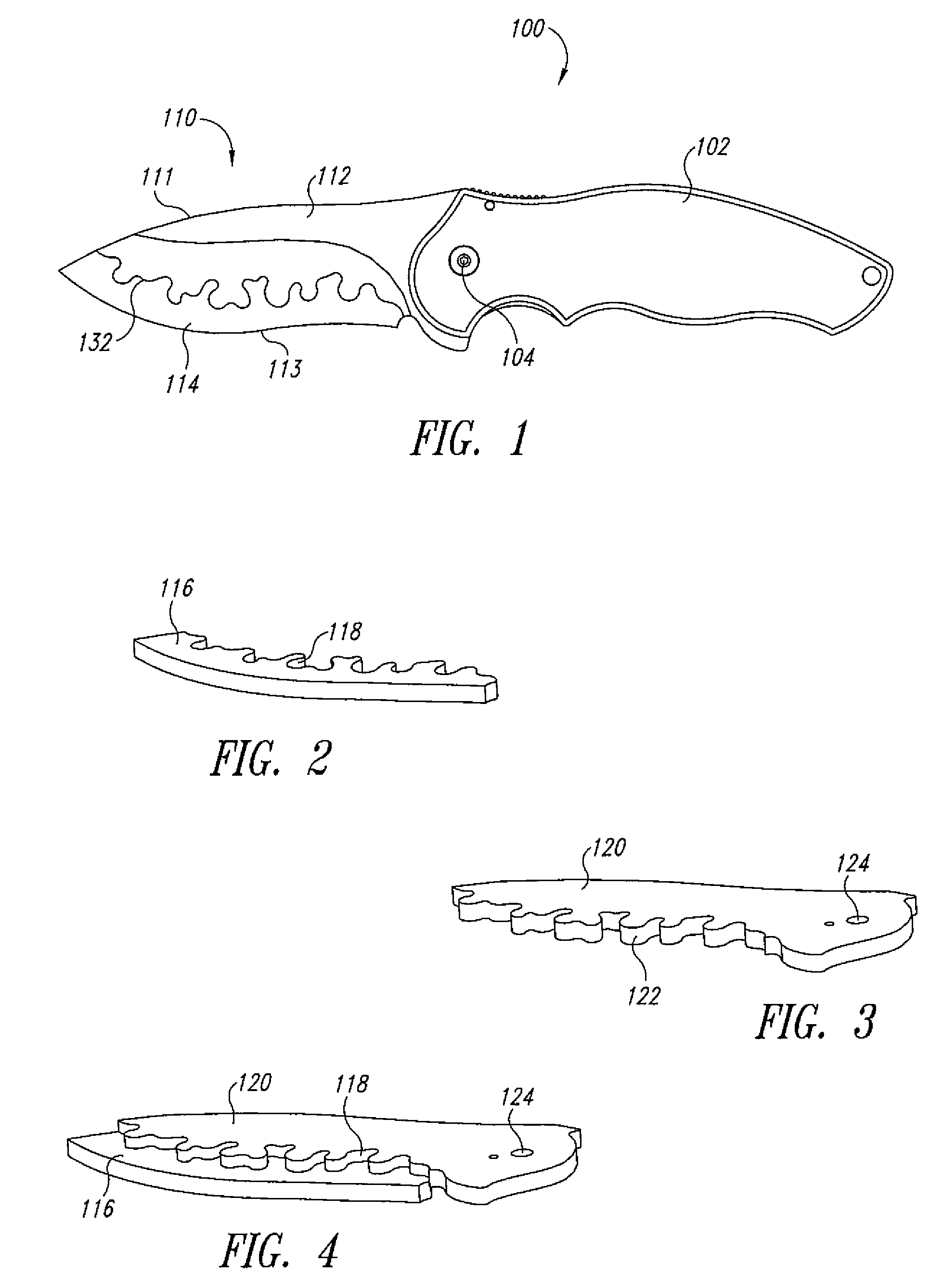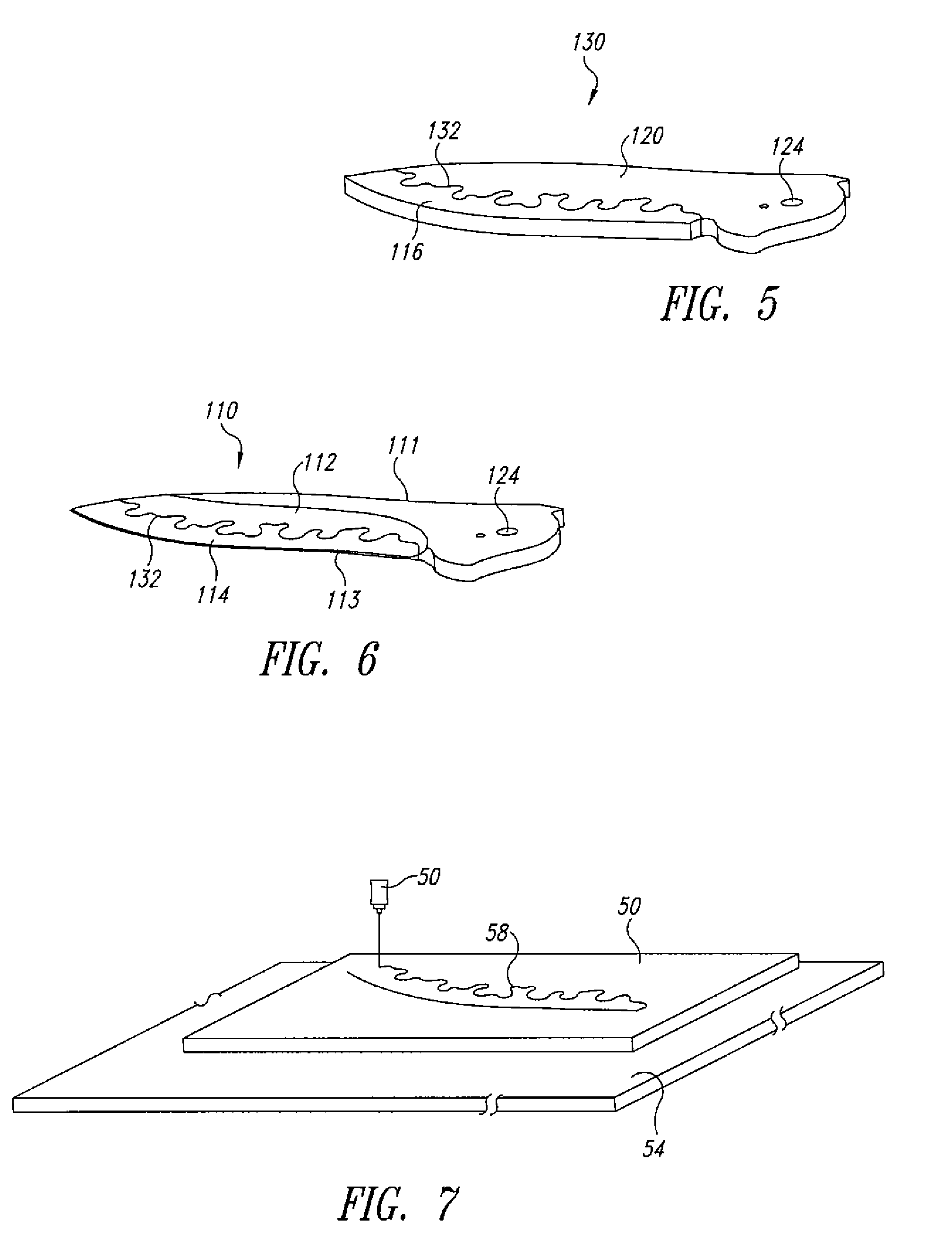Composite knife blade
a knife blade and composite technology, applied in the field of knives, can solve the problems of limited use of knives that lose their edges quickly and need to be sharpened frequently, knife blades with an extremely high degree of hardness are generally more easily broken than other knives, and new and specialized alloys can be significantly more expensiv
- Summary
- Abstract
- Description
- Claims
- Application Information
AI Technical Summary
Benefits of technology
Problems solved by technology
Method used
Image
Examples
Embodiment Construction
[0018]FIG. 1 shows a folding knife 100 according to an embodiment of the invention, comprising a handle 102 and a composite blade 110. The blade 110 is coupled to the handle by a fastener 104 and configured to pivot around the fastener 104 between an open and a closed position. The blade 110 includes a back piece 112, comprising the spine 111 of the blade 110, and a cutting-edge piece 114, comprising the sharpened cutting-edge 113 of the blade. The back and cutting-edge pieces 112, 114 are formed from dissimilar metal alloys and joined at a serpentine joint 132. The materials of the back and cutting-edge pieces 112, 114 are selected according to a number of criteria. Preferably, the back piece 112 is of an alloy that has a high degree of toughness so that it can tolerate stresses like those arising, for example, from flexing and sharp impacts. The back piece 112 may be selected, for example, from among common and relatively inexpensive alloys that have the desired characteristics. T...
PUM
| Property | Measurement | Unit |
|---|---|---|
| hardness | aaaaa | aaaaa |
| Rockwell hardness | aaaaa | aaaaa |
| surface texture | aaaaa | aaaaa |
Abstract
Description
Claims
Application Information
 Login to View More
Login to View More - R&D
- Intellectual Property
- Life Sciences
- Materials
- Tech Scout
- Unparalleled Data Quality
- Higher Quality Content
- 60% Fewer Hallucinations
Browse by: Latest US Patents, China's latest patents, Technical Efficacy Thesaurus, Application Domain, Technology Topic, Popular Technical Reports.
© 2025 PatSnap. All rights reserved.Legal|Privacy policy|Modern Slavery Act Transparency Statement|Sitemap|About US| Contact US: help@patsnap.com



